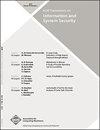将java的原生世界置于控制之下
Q Engineering
引用次数: 17
摘要
为了提高性能和合并遗留库,许多Java应用程序包含用不安全语言(如C和c++)编写的本机代码组件。本机代码组件通过Java本机接口(JNI)与Java组件进行互操作。由于本机代码不受Java安全模型的约束,因此它对托管Java世界构成了严重的安全威胁。我们引入了一个安全框架,它扩展了Java的安全模型,并使本机代码处于控制之下。该框架利用基于软件的故障隔离,将本机代码放在单独的沙箱中,并且只允许本机世界和Java世界之间通过精心设计的途径进行交互。构建了两个不同的实现。在一种实现中,安全框架被集成到Java虚拟机(JVM)中。在第二个实现中,框架构建在JVM之外,并利用与JVM无关的接口。第二个实现提供JVM可移植性,但代价是性能下降。对我们框架的评估表明,它在显著增强Java应用程序的安全性的同时,产生了适度的运行时开销。本文章由计算机程序翻译,如有差异,请以英文原文为准。
Bringing java's wild native world under control
For performance and for incorporating legacy libraries, many Java applications contain native-code components written in unsafe languages such as C and C++. Native-code components interoperate with Java components through the Java Native Interface (JNI). As native code is not regulated by Java's security model, it poses serious security threats to the managed Java world. We introduce a security framework that extends Java's security model and brings native code under control. Leveraging software-based fault isolation, the framework puts native code in a separate sandbox and allows the interaction between the native world and the Java world only through a carefully designed pathway. Two different implementations were built. In one implementation, the security framework is integrated into a Java Virtual Machine (JVM). In the second implementation, the framework is built outside of the JVM and takes advantage of JVM-independent interfaces. The second implementation provides JVM portability, at the expense of some performance degradation. Evaluation of our framework demonstrates that it incurs modest runtime overhead while significantly enhancing the security of Java applications.
求助全文
通过发布文献求助,成功后即可免费获取论文全文。
去求助
来源期刊

ACM Transactions on Information and System Security
工程技术-计算机:信息系统
CiteScore
4.50
自引率
0.00%
发文量
0
审稿时长
3.3 months
期刊介绍:
ISSEC is a scholarly, scientific journal that publishes original research papers in all areas of information and system security, including technologies, systems, applications, and policies.
 求助内容:
求助内容: 应助结果提醒方式:
应助结果提醒方式:


